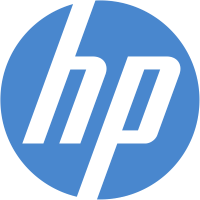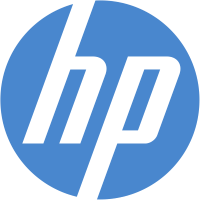
HP Inc
NYSE:HPQ


| US |

|
Johnson & Johnson
NYSE:JNJ
|
Pharmaceuticals
|
| US |

|
Berkshire Hathaway Inc
NYSE:BRK.A
|
Financial Services
|
| US |

|
Bank of America Corp
NYSE:BAC
|
Banking
|
| US |

|
Mastercard Inc
NYSE:MA
|
Technology
|
| US |

|
UnitedHealth Group Inc
NYSE:UNH
|
Health Care
|
| US |

|
Exxon Mobil Corp
NYSE:XOM
|
Energy
|
| US |

|
Pfizer Inc
NYSE:PFE
|
Pharmaceuticals
|
| US |

|
Palantir Technologies Inc
NYSE:PLTR
|
Technology
|
| US |

|
Nike Inc
NYSE:NKE
|
Textiles, Apparel & Luxury Goods
|
| US |

|
Visa Inc
NYSE:V
|
Technology
|
| CN |

|
Alibaba Group Holding Ltd
NYSE:BABA
|
Retail
|
| US |

|
3M Co
NYSE:MMM
|
Industrial Conglomerates
|
| US |

|
JPMorgan Chase & Co
NYSE:JPM
|
Banking
|
| US |

|
Coca-Cola Co
NYSE:KO
|
Beverages
|
| US |

|
Walmart Inc
NYSE:WMT
|
Retail
|
| US |

|
Verizon Communications Inc
NYSE:VZ
|
Telecommunication
|
Utilize notes to systematically review your investment decisions. By reflecting on past outcomes, you can discern effective strategies and identify those that underperformed. This continuous feedback loop enables you to adapt and refine your approach, optimizing for future success.
Each note serves as a learning point, offering insights into your decision-making processes. Over time, you'll accumulate a personalized database of knowledge, enhancing your ability to make informed decisions quickly and effectively.
With a comprehensive record of your investment history at your fingertips, you can compare current opportunities against past experiences. This not only bolsters your confidence but also ensures that each decision is grounded in a well-documented rationale.
Do you really want to delete this note?
This action cannot be undone.

| 52 Week Range |
27.62
39.3
|
| Price Target |
|
We'll email you a reminder when the closing price reaches USD.
Choose the stock you wish to monitor with a price alert.

|
Johnson & Johnson
NYSE:JNJ
|
US |

|
Berkshire Hathaway Inc
NYSE:BRK.A
|
US |

|
Bank of America Corp
NYSE:BAC
|
US |

|
Mastercard Inc
NYSE:MA
|
US |

|
UnitedHealth Group Inc
NYSE:UNH
|
US |

|
Exxon Mobil Corp
NYSE:XOM
|
US |

|
Pfizer Inc
NYSE:PFE
|
US |

|
Palantir Technologies Inc
NYSE:PLTR
|
US |

|
Nike Inc
NYSE:NKE
|
US |

|
Visa Inc
NYSE:V
|
US |

|
Alibaba Group Holding Ltd
NYSE:BABA
|
CN |

|
3M Co
NYSE:MMM
|
US |

|
JPMorgan Chase & Co
NYSE:JPM
|
US |

|
Coca-Cola Co
NYSE:KO
|
US |

|
Walmart Inc
NYSE:WMT
|
US |

|
Verizon Communications Inc
NYSE:VZ
|
US |
This alert will be permanently deleted.
 HP Inc
HP Inc
HP Inc
Investor Relations
HP Inc., a stalwart in the realm of personal computing and printing, traces its origin to the legendary Hewlett-Packard Company. Its journey began as a widely diversified technology enterprise, but in 2015, a strategic bifurcation gave birth to HP Inc. and Hewlett Packard Enterprise. HP Inc., based in Palo Alto, California, took the mantle of personal systems and printing, carving out a niche as a leader in these sectors. The company's business model centers around the production and sale of a wide array of personal computers and printers, targeting both consumers and enterprises. Its portfolio includes laptops, desktops, and workstations that cater to a broad spectrum of users, from everyday consumers to high-end professionals.
Central to HP Inc.'s success is its ability to continuously innovate while operating at scale. The company thrives on a dual-income model, generating revenue not just through selling hardware but also through a stream of recurring income from supplies like ink and toner. This supplies segment, often viewed as the razor-and-blades model, contributes to steady cash flow. The firm's ingrained focus on sustainability and design also adds a competitive edge, as evidenced by its efforts in innovating eco-friendly products and solutions. Moreover, HP Inc. strategically expands its market footprint via acquisitions and strategic partnerships, ensuring that it remains at the forefront of the ever-evolving technology landscape. This adaptability is what keeps HP Inc. not only surviving but thriving in the competitive tech arena.

HP Inc., a stalwart in the realm of personal computing and printing, traces its origin to the legendary Hewlett-Packard Company. Its journey began as a widely diversified technology enterprise, but in 2015, a strategic bifurcation gave birth to HP Inc. and Hewlett Packard Enterprise. HP Inc., based in Palo Alto, California, took the mantle of personal systems and printing, carving out a niche as a leader in these sectors. The company's business model centers around the production and sale of a wide array of personal computers and printers, targeting both consumers and enterprises. Its portfolio includes laptops, desktops, and workstations that cater to a broad spectrum of users, from everyday consumers to high-end professionals.
Central to HP Inc.'s success is its ability to continuously innovate while operating at scale. The company thrives on a dual-income model, generating revenue not just through selling hardware but also through a stream of recurring income from supplies like ink and toner. This supplies segment, often viewed as the razor-and-blades model, contributes to steady cash flow. The firm's ingrained focus on sustainability and design also adds a competitive edge, as evidenced by its efforts in innovating eco-friendly products and solutions. Moreover, HP Inc. strategically expands its market footprint via acquisitions and strategic partnerships, ensuring that it remains at the forefront of the ever-evolving technology landscape. This adaptability is what keeps HP Inc. not only surviving but thriving in the competitive tech arena.





























 You don't have any saved screeners yet
You don't have any saved screeners yet
